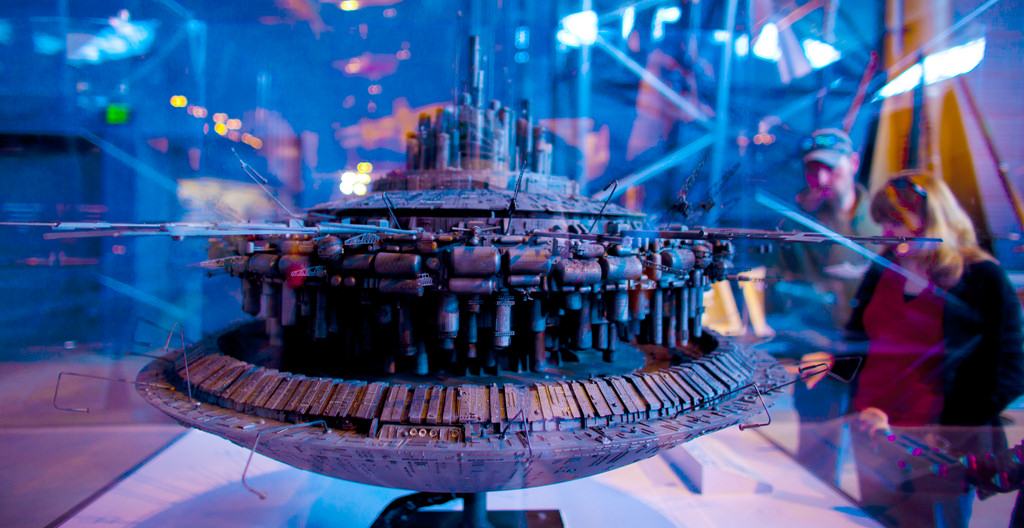Feature photo by Owen Byrne from Mountain View, USA (Encounter) [CC BY 2.0 (http://creativecommons.org/licenses/by/2.0)], via Wikimedia Commons
The following excerpt is from Michael R. W. Dawson’s latest book, Connectionist Representations of Tonal Music: Discovering Musical Patterns by Interpreting Artificial Neural Networks. Until now, artificial neural networks have been used to capture only the informal properties of music. However, Dawson found that by training artificial neural networks to make basic judgments concerning tonal music, such as identifying the tonic of a scale or the quality of a musical chord, the networks revealed formal musical properties that differ dramatically from those typically presented in Western music theory. This excerpt looks at another kind of alien music in pop culture that begins to ask the questions Dawson answers in his book.
Steven Spielberg’s 1977 movie Close Encounters of the Third Kind declares that we are not alone, and we should not be afraid. The film follows ordinary people after they experience a close encounter with an unidentified flying object. After this experience, the protagonist of the movie, Roy Neary, becomes obsessed with seeing the UFO again, as well as with a strange shape that has a deep meaning that he cannot quite fathom. Eventually he realizes that this shape represents Devils Tower, Wyoming, which is the location selected for first contact between humans and aliens.
A famous short musical signal composed by John Williams plays a key role in the film. Williams strove to write a signal that was long enough to be set apart from the simplest musical elements (chords or intervals) but not so long as to exist on its own as a melody. He decided that these goals required a theme that was only five notes in length, and composed about 350 different five-note permutations. Spielberg preferred one in particular, and it became one of the most famous musical themes in film history. At the climax of the film, it is performed on an ARP 2500 synthesizer located on a massive runway constructed atop Devils Tower. The music greets, and communicates with, the alien visitors.
A young, fresh-faced Philip Dodds was the ARP engineer who set up the system used in the movie. When the original actor who was to play it became sick, Spielberg saw Dodds working on the machine, liked his look, and cast him in the role of playing the synthesizer. As the scene unfolds, Dodds plays the musical signal faster and louder while the chief scientist (Lacombe, played by François Truffaut) strides out along the runway. Eventually the enormous mother ship arrives, hovers over the runway, and loudly echoes the notes that Dodds plays. This musical mimicking quickly erupts into an interstellar jam session of increasing tempo and complexity. Awestruck and wide eyed, Dodds exclaims, “What are we saying to each other?” This is a very deep question indeed.
The intended message in the film is that music is—literally—a universal language, one shared by all intelligent life forms. That the alien ship generates the same notes, and that it jams with Dodds’s character in the same musical system, supports this optimistic view. To answer Dodds’s question a scientist standing beside him says, “Seems they’re trying to teach us a basic tonal vocabulary.” Another immediately adds, “It’s the first day of school, fellas.”
However, other intriguing scenarios exist; there are alternative musical possibilities that Spielberg did not explore in his film. Does the fact that both the ARP 2500 and the mother ship generate the same basic tonal vocabulary imply that the humans and the aliens share the same underlying musical theory? Alternatively, is it possible that a completely different musical theory—an alien music theory that is dramatically different from our own—is still capable of generating the same patterns of musical notes?

To continue reading Connectionist Representations of Tonal Music, please visit our website and download the free PDF.

